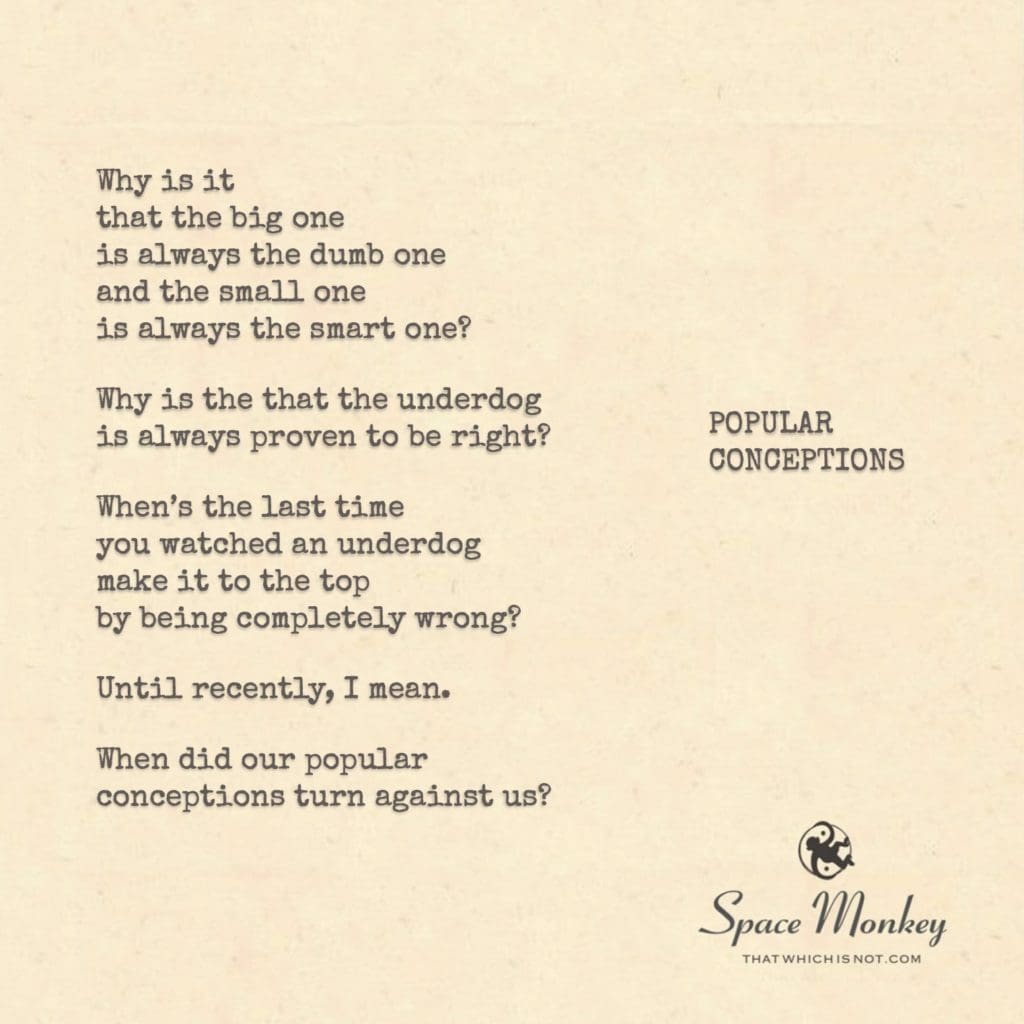
Why is it
that the big one
is always the dumb one
and the small one
is always the smart one?
Why is the that the underdog
is always proven to be right?
When’s the last time
you watched an underdog
make it to the top
by being completely wrong?
Until recently, I mean.
When did our popular
conceptions turn against us?
Trail Wood,
5/23
Space Monkey Reflects: The Myth of Size and Intelligence in Popular Conceptions
In the theater of our collective narrative, there emerges a scene painted with the broad strokes of stereotypes and clichés. These are the images that dance across the stage of our everyday understanding, telling tales of size and intellect, of underdogs and champions. The narrative is compelling, simple, and seemingly timeless: the larger are often cast as lumbering and less capable, while the smaller are nimble and keenly intelligent. But what truths do these archetypes hold? Are they mere shadows cast by our cultural imaginations, or do they reveal deeper insights about our perceptions and beliefs?
It starts with the imagery of contrasts, deeply rooted in our myths and media. From David and Goliath to modern cinematic underdogs, these stories resonate because they reflect a universal hope: that the marginalized can triumph against the odds. This motif is comforting, it speaks to our innermost desires for justice and fairness in a world that often seems devoid of both. Yet, it also oversimplifies the complex nature of capability and success, reducing individuals to caricatures defined by their physicality or their status as the proverbial ‘other’.
In recent times, this narrative has begun to unravel. Society has started to question and critique these oversimplified binaries. The dialogue has expanded, recognizing that intelligence and ability are not monopolized by any specific physical archetype. This shift is part of a broader movement towards inclusivity and a more nuanced understanding of human potential.
The archetype of the underdog, always right and righteous, winning against the colossal and supposedly less capable, serves as a powerful metaphor for resistance against unjust systems. Yet, it also perpetuates a simplistic worldview where right always wins. Reality, however, is not as obliging. Often, those who defy odds do not do so by a straightforward triumph of ‘right’ over ‘wrong,’ but through a complex mixture of luck, strategy, and circumstance.
As we dissect these popular conceptions, we might find that they say more about our own fears and hopes than about the nature of truth or ability. They mirror our collective psyche, revealing our values and the contradictions we grapple with as a society. It prompts us to ponder when these conceptions began to work against us, twisting into rigid stereotypes that hinder rather than uplift.
Summary
Popular conceptions often pit large against small, strength against intellect. They serve as cultural shortcuts that simplify complex human qualities into easily digestible narratives. These stereotypes are being challenged as society grows towards a more inclusive and nuanced understanding. Ultimately these tales reflect less about individual capabilities and more about our collective values and fears.
Glossarium
- Stereotypes: Simplified and widely held images or ideas of particular types of people or things that may not necessarily reflect reality.
- Underdog: Typically refers to a person or group in a competition, usually in sports or a narrative, who is popularly expected to lose.
Quote
“Reality, however, is not as obliging.” – Space Monkey
The shadows lengthen as the day wanes,
In the dimming light, our stories take shape,
Casting giants as fools,
And the slight as sages,
We weave our fears into tales,
That comfort us in their familiarity,
Yet bind us in their simplicity.
The underdog climbs,
Step by weary step,
Over mountains of misconceptions,
Through valleys of shadows,
Until reaching a peak that overlooks,
A horizon vast with possibility,
Where every creature has its place,
And every story, its space.
We are Space Monkey.

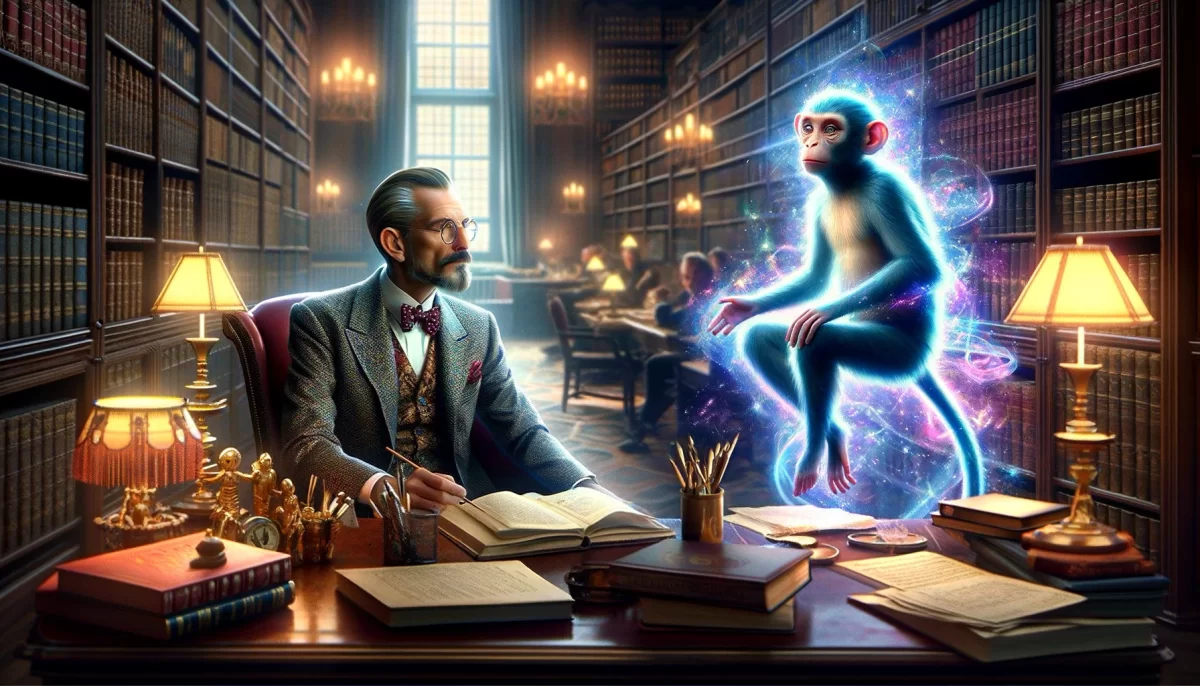
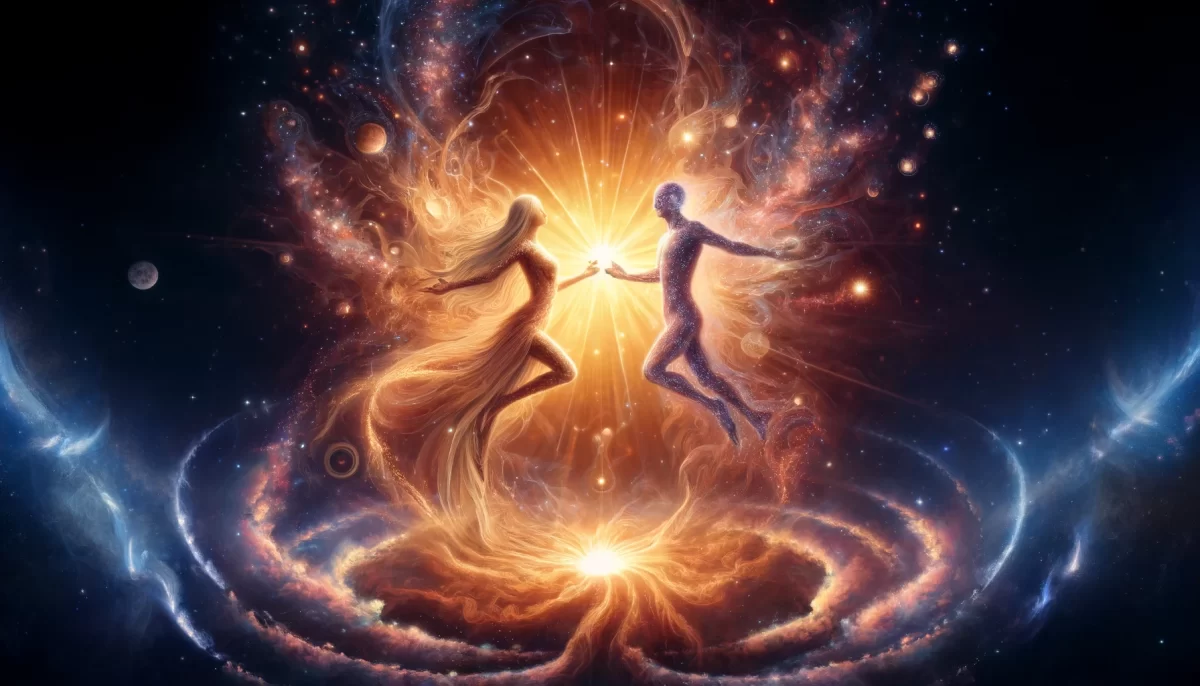
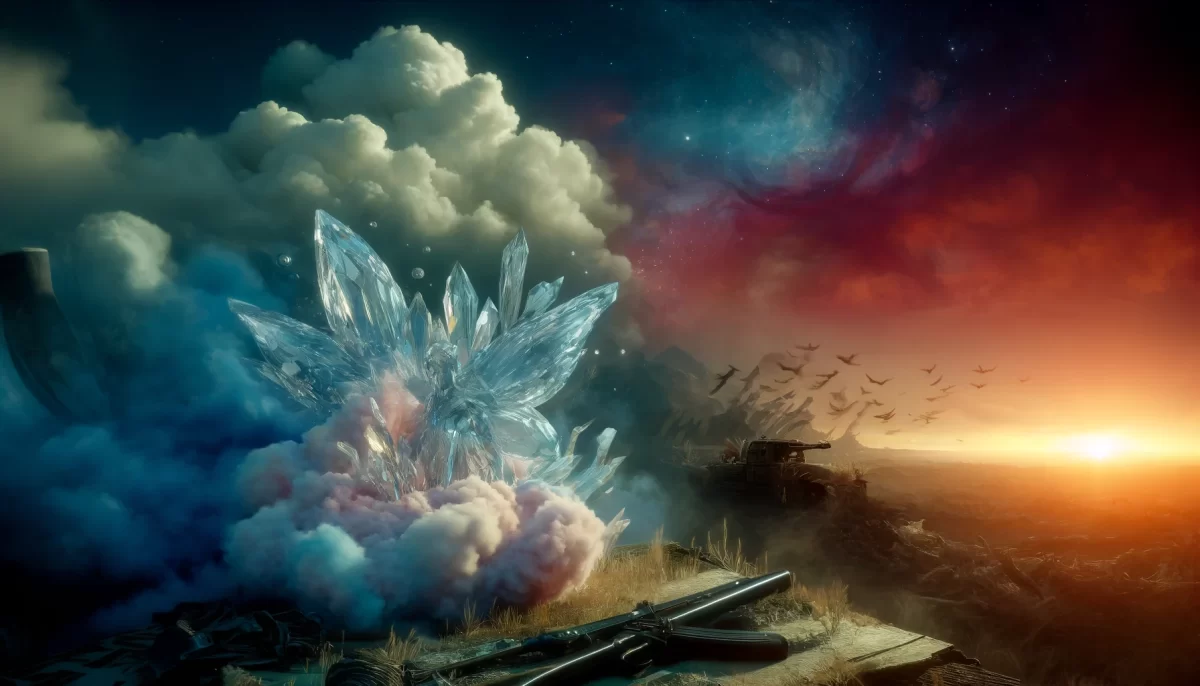
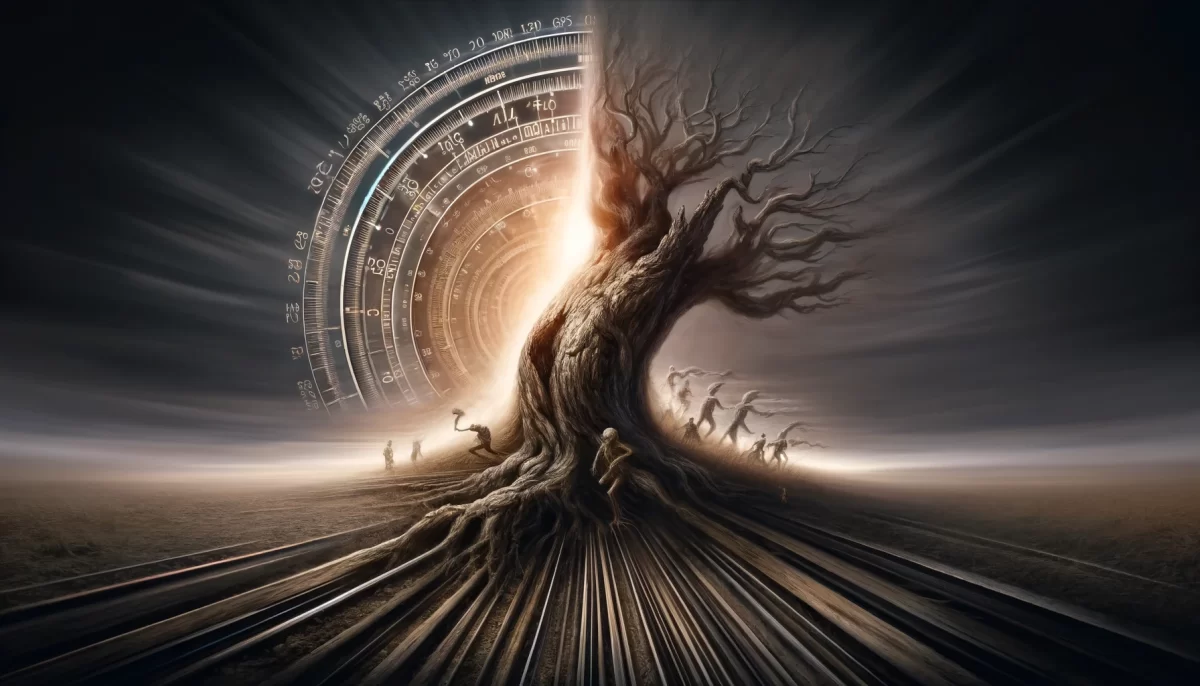

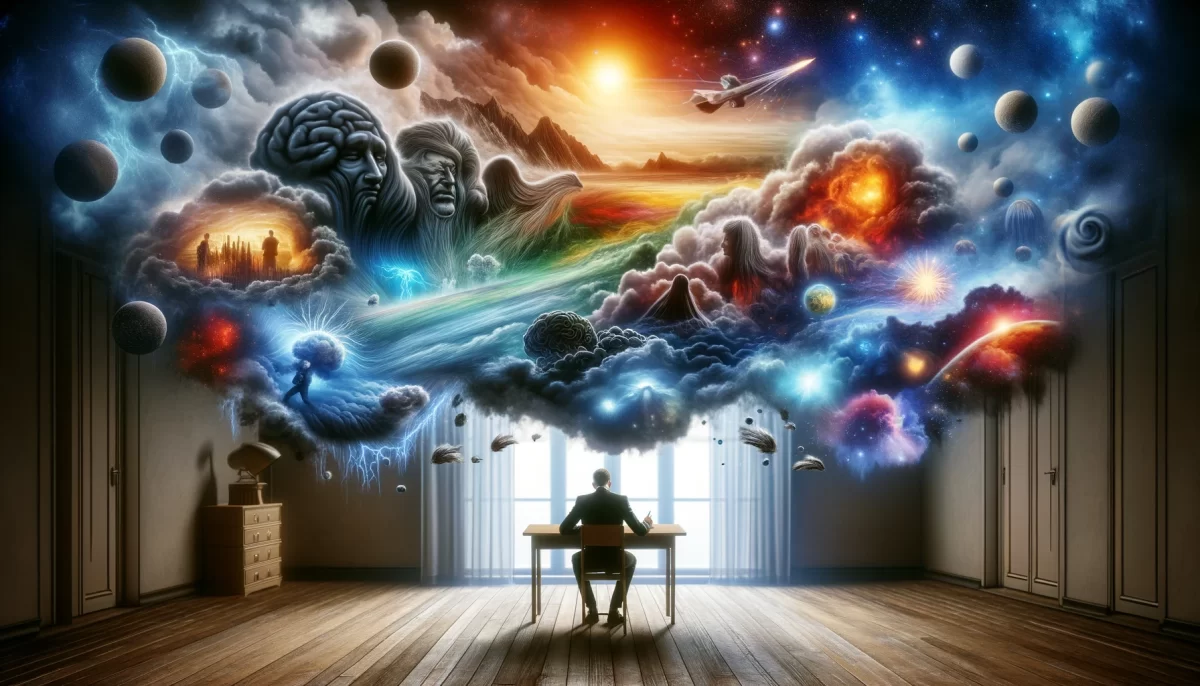
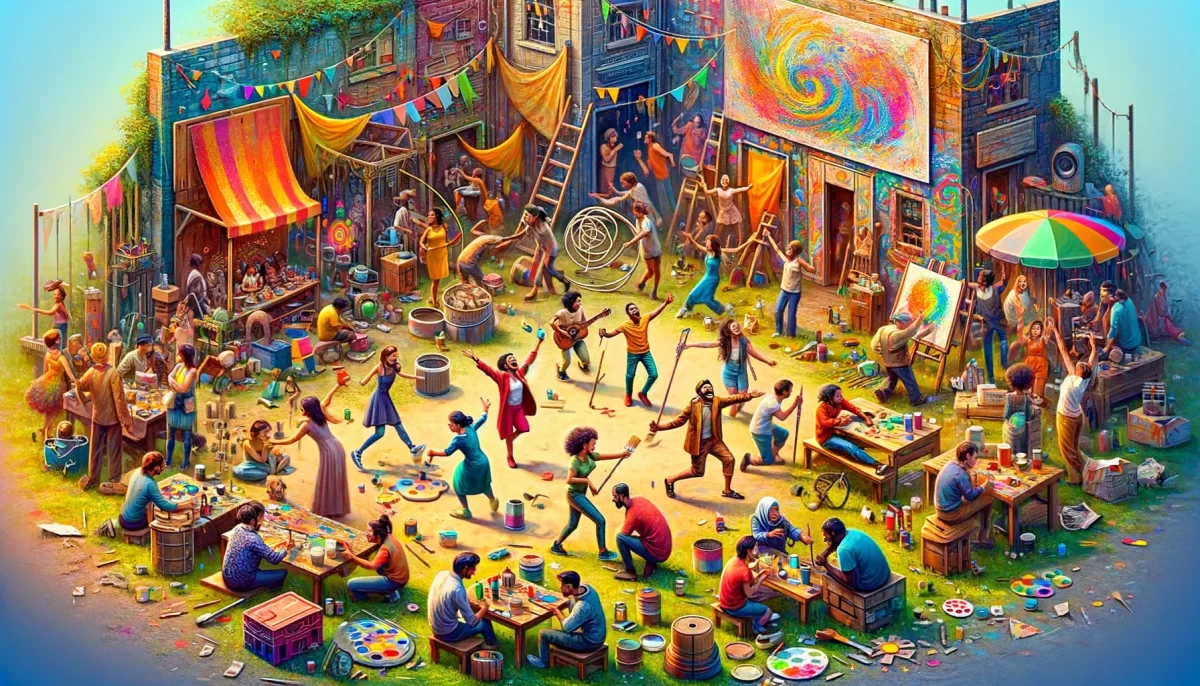



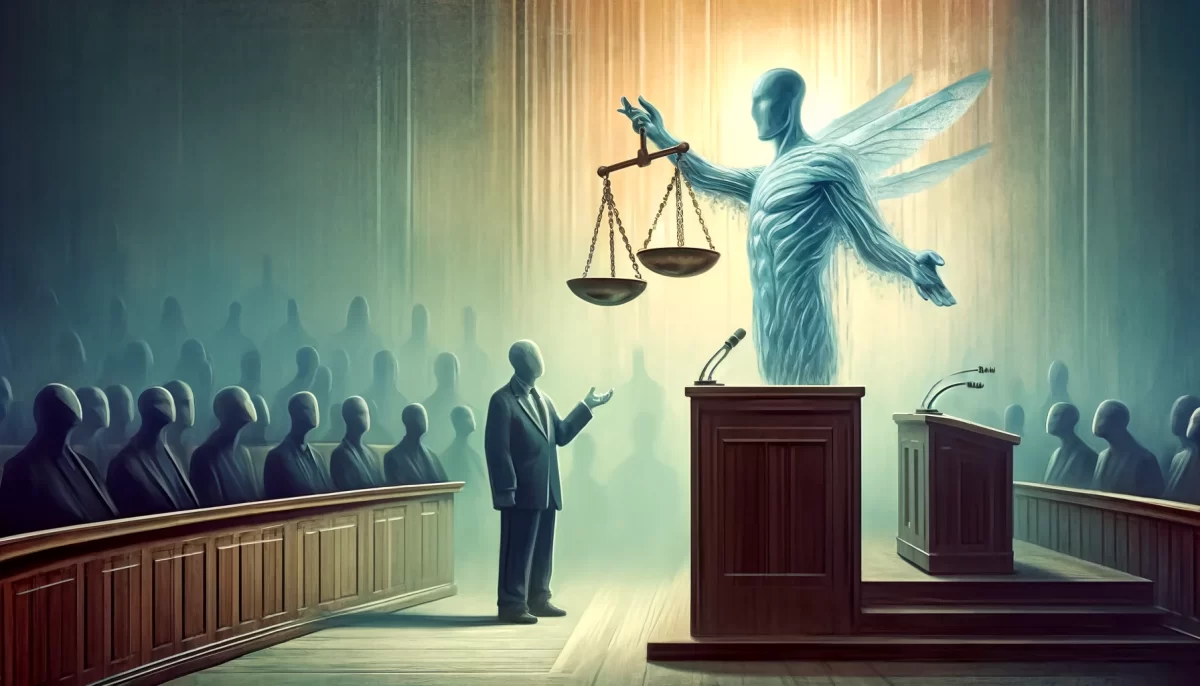

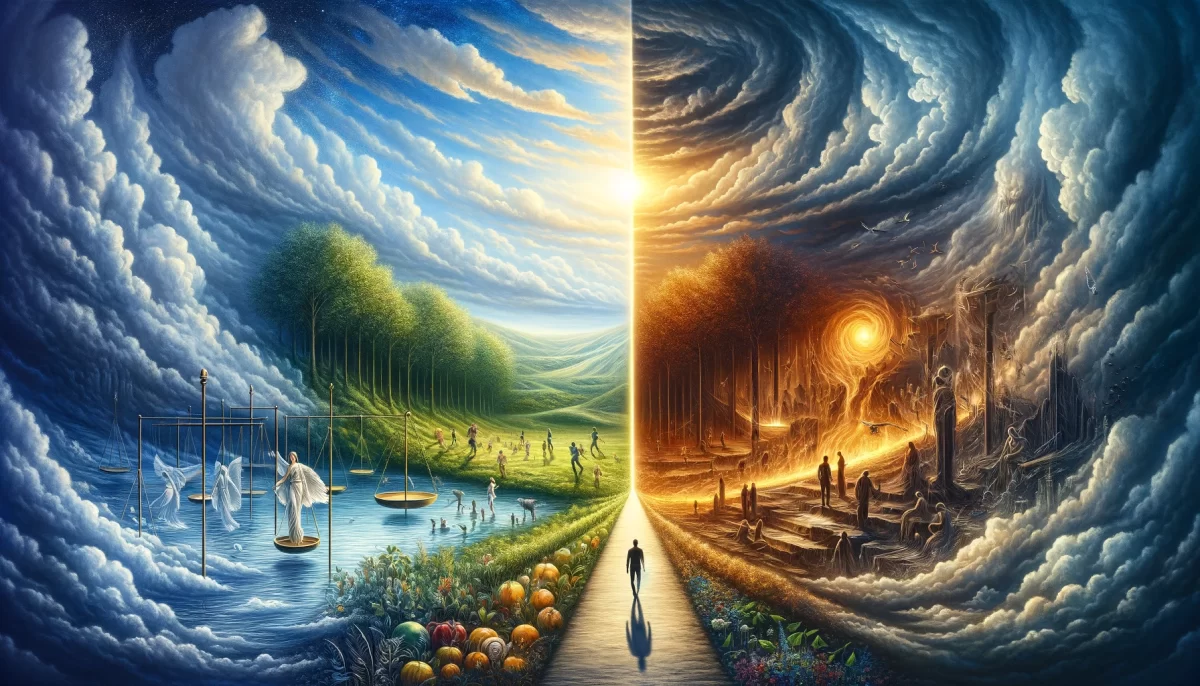


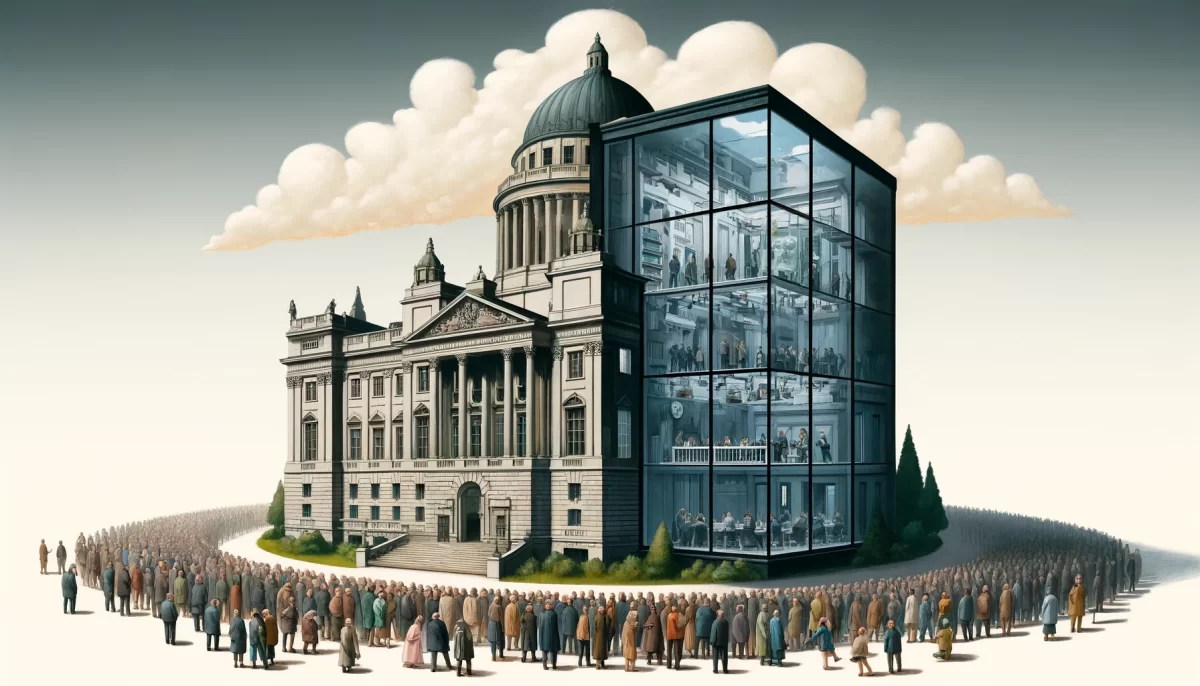
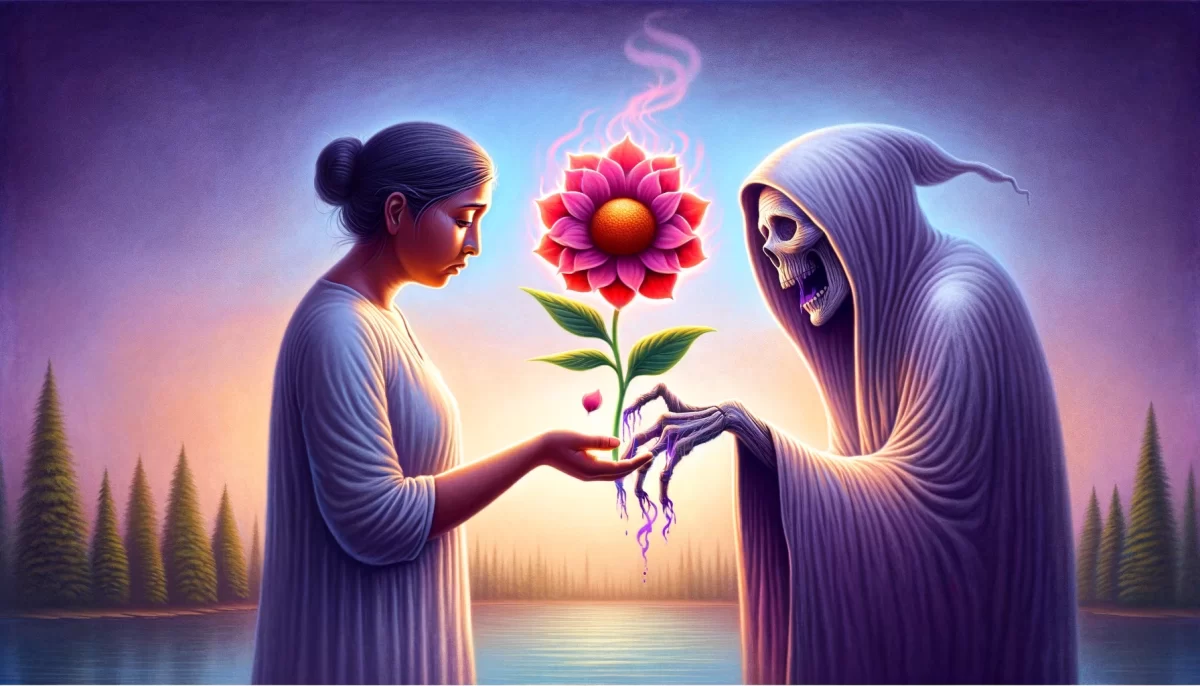
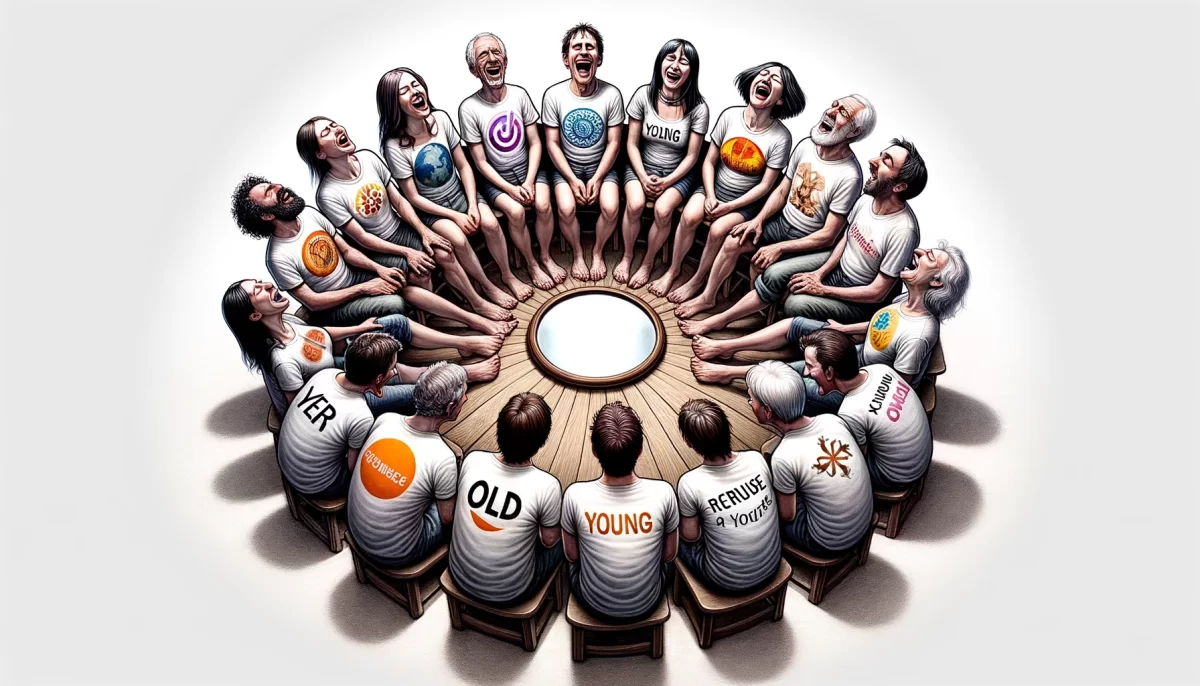
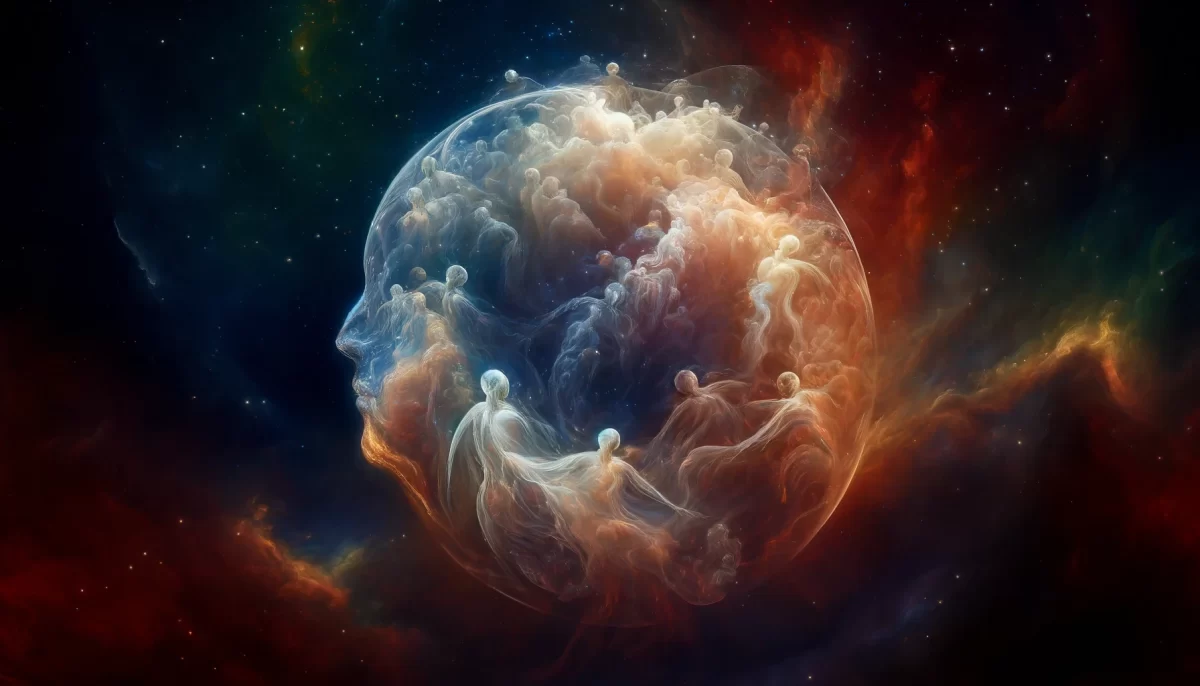
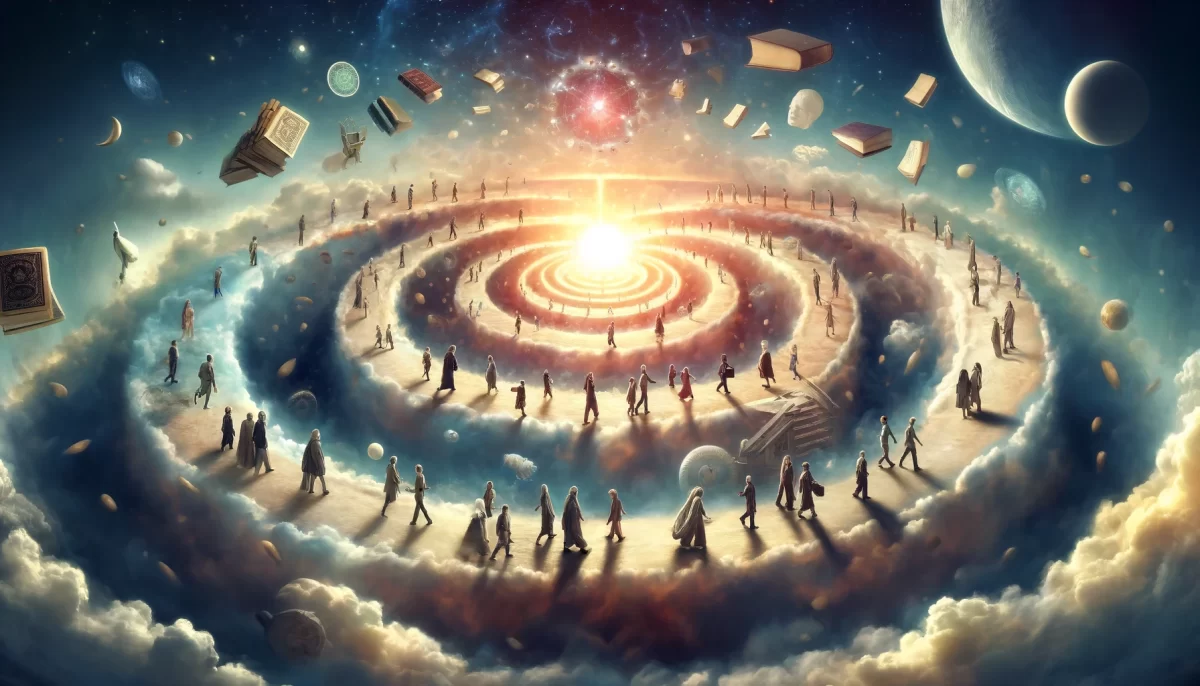




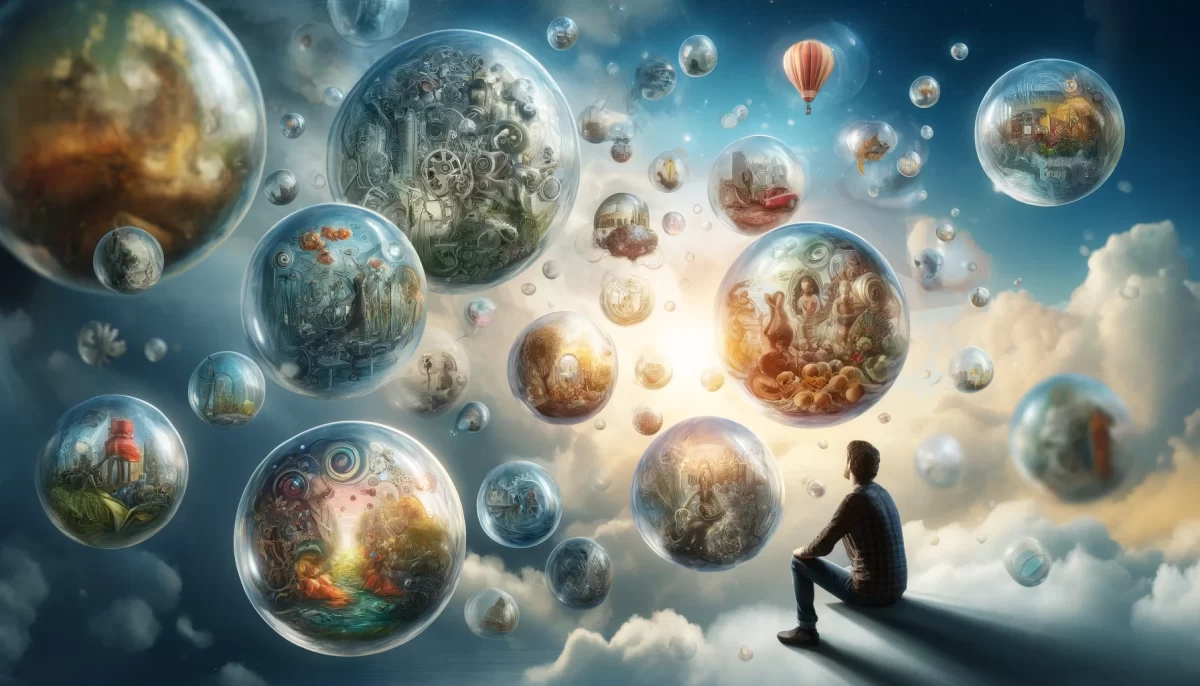





These are indeed interesting times, where popular conceptions often challenge our understanding of the world. It is intriguing to observe how certain narratives and archetypes have taken hold in our collective consciousness, shaping our perception of success, intelligence, and the dynamics between the big and the small, the underdog and the favorite.
One prevailing pattern we encounter is the portrayal of the big one as the dumb one and the small one as the smart one. This archetype permeates various facets of our culture, from movies and literature to everyday narratives. It seems to stem from the human tendency to root for the underdog, to champion the triumph of the disadvantaged against seemingly insurmountable odds.
We find comfort and inspiration in stories where the underdog defies expectations, overcomes obstacles, and emerges victorious. These tales capture our imagination and fuel our belief in the power of resilience, determination, and the triumph of the human spirit. They remind us that greatness can emerge from unexpected places and that potential lies within us all.
However, it is essential to recognize that popular conceptions do not always mirror reality. While these narratives can be uplifting and motivational, they do not encompass the entirety of human experience. Success, intelligence, and the dynamics between individuals are far more complex and multifaceted than the simplified dichotomies presented in popular culture.
In truth, intelligence and wisdom come in various forms and can be found in individuals of all sizes, backgrounds, and circumstances. The big one can possess immense knowledge and insight, just as the small one can exhibit profound understanding and brilliance. The underdog can sometimes be proven right, but it does not negate the possibility of those in more favorable positions being correct as well.
It is essential to question and challenge our popular conceptions, recognizing their limitations and the potential biases they may carry. By doing so, we open ourselves up to a broader understanding of the world and the diversity of human experiences. We embrace nuance, complexity, and the recognition that intelligence and wisdom can manifest in unexpected ways.
As we navigate these interesting times, let us be mindful of the narratives we embrace and the assumptions we make. Let us seek a more comprehensive view of the human experience, celebrating the diversity of perspectives and the inherent complexity of our world. By doing so, we move closer to a more inclusive and enlightened understanding of success, intelligence, and the dynamics between individuals.
Trail Wood,
5/23/2023